Oppo has had an interesting couple of years in the Australian market since their launch in 2014. The company got off to a flying start partnering with AllPhones and then moving up to Dick Smith and then securing carrier partner Optus. The demise of Dick Smith was a stumble which they quickly overcame partnering with JB Hi-Fi in time for the launch of their latest high end entry into the Australian smartphone market with the launch of the Oppo R9.
The Oppo R9 is the localised version of the Oppo F1 Plus handset that’s launching in other markets around the world. The phones specs are high-end, with a surprisingly high resolution selfie camera on the front which is designed to have you looking your best in any circumstances – or maybe I should lower that auto-beauty setting!
With their handsets in Australia, Oppo has always been aiming at launching well designed handsets which also meet a price point. With the R9, that price point of $599 allows them to include some pretty top notch specs you’d expect in a lot higher end name brand hardware. The design may be familiar, but it has its own style and it owns it completely.
The R9 is available from all the Oppo retail partners including AllPhones, as well as new partner JB Hi-Fi at retail, as well as online from the Oppo Australia website. Is it worth your money? Let’s find out.
Oppo R9 Hardware
Let’s get right to the point. There’s no denying that Oppo have taken design cues from Apple’s iPhone with the R9, but they’ve improved it somewhat with what I feel are cleaner and better looking lines, especially with the antenna line that moves through that camera module on the rear rather than underscoring it as you’ll find on the iPhone. They’ve also taken design cues from other high-end aluminium designed handsets as well, but the same can be said of all manufacturers these days. What looks good, looks good and the Oppo R9 does look good.
The handset also feels good too, it’s compact and fits nicely into the hand, but Oppo has packed an immense amount of hardware into quite a small body which disappears into your pants pocket. I was often forced to go looking for it as I couldn’t feel it in my pocket and that’s a good sign for a phone that packs a 5.5″ display.
The slim feeling is thanks to an almost bezel-less display with a slim line either side of the AMOLED display. The curved aluminium body is a little slippery to hold, it’s something I’d like to see worked on in future generations of their unibody designs, only an issue if you’re planning on carrying the phone sans case.
The display is pretty good, but at 5.5″ the 1080P resolution is pushing it in terms of what defines a good screen. It’s obviously kept the price down, but we are moving towards a world where phones are being used to power VR headsets and 1080P isn’t nearly as good as a QHD screen. That said, the display on the Oppo R9 is pretty decent, with a fairly good auto-brightness and as it’s AMOLED it’s got great blacks and good colour range.
When it comes to colour options of the phone however, I can’t say I`m a huge fan of the pink colour that Oppo is offering. I never understood the rose gold craze that’s currently going around in the phone industry, but, never fear because the gold coloured Oppo R9 is a handsome looking phone.

Oppo has for me delivered a winner with button placement on the R9. I prefer a separation of volume and power, with the volume buttons – separate buttons of course – on the left and the power button on the right. I would prefer a textured button for the power, but I`m getting picky here. That said I do love the button placement on the phone.
There’s very little else on the phone, a SIM tray/microSD card slot sits above the power button and on the base of the phone is a microUSB port with a 3.5mm jack beside the rear mounted speaker. That speaker packs a punch too, with the placement allowing it to sit on a desk without muting the sound. It’s not front-facing as we’ve all mostly come to prefer but it’s a great option. The speakers pack a punch with a fairly good range, it’s not going to stop you wanting to use an external dedicated speaker for music, but it’s good.

Under the hood, the R9 has all the power you could really want. Oppo has opted for a Mediatek processor in the R9, one of the reasons they can keep the price down to $599, but it’s an Octa-core processor which is paired with 4GB of RAM and that means you’re essentially running everything as fluidly as possible. There’s no real downside to the Mediatek processor here. It’s a good choice and performs well.
The phone comes with a very nice amount of storage, packing in 64GB of onboard storage with the option to add a microSD card as well. There doesn’t appear to be a way to set the microSD card up as adoptable storage however, so the card is really limited in terms of running apps etc.
The cameras are where Oppo gets very high-end, there’s a clear preference for the selfie camera on the R9 with the rear camera getting a 13MP sensor with an f/2.2 aperture while the front-facing camera is bumped to a 16MP sensor with an f/2.2 aperture. There’s other hardware mods included with both which we’ll get to later on, but suffice to say both sensors perform quite well and prove Oppo really is getting a handle on cameras in their phones.
The decisions made by Oppo for the R9 are all up a good combination of hardware and design. The phone is comfortable to hold, is definitely not uncomfortable in your pocket and runs everything almost effortlessly.
What’s inside
| Display | 5.0″ 1920×1080 (FullHD) AMOLED display with Corning Gorilla Glass 4 |
| Processor | MediaTek Helio P10, Octa-core 2.0GHz |
| RAM | 4GB RAM |
| Storage | 64GB (Expandable up to 128GB) |
| Rear Camera | 13.0MP with f/2.2 aperture and Flash |
| Front Camera | 16.0MP with f/2.0 aperture |
| Connectivity | Wi-Fi 802.11 a/b/g/n, Bluetooth 4.0, GPS |
| Radios: | GSM: 850/900/1800/1900MHz WCDMA: 850/900/1900/2100MHz FDD-LTE: 1/3/5/7/8/28 TD-LTE: 38/39/40/41 |
| Operating System | Android 5.1 with Color OS 3.0 |
| Battery | 2,850 mAh (non-removable) |
Camera
The Oppo R9 is aimed at those people who live their life through the front-facing camera: the selfie addict, even going so far as nick naming the phone the ‘Selfie Expert’. I can’t say I’m exactly in that category, bit I have been known on occasion or two to take a selfie, but it’s generally a fairly rare thing. Oppo though is really giving anyone who wants to take a selfie to really take a top notch one.
The Oppo R9 16MP has the hardware you’d want as a selfie addict, with what they call the Hi-Light camera that’s designed to be more sensitive that standard camera sensors in low-light, back-lit and night time environments. Oppo says that the camera is four times more sensitive than standard cameras, with four times less noise, with twice the dynamic range – and you can see the results in the sample shots.
Oppo has put a lot of work into the ISOCELL sensor using the f/2.0 aperture to capture a lot of light, and then paired it with a processor that quite frankly, despite the subject 😉 delivers a beautiful shot.
The front-facing camera has a pretty nice 78.1° wide-angle view, but also offers a software option to take a selfie panorama. The so called ‘groufie’ phenomenon kicked off really by Ellen in her Oscar photo really kicked that idea into high drive and if you’re in that circumstance where you want to get everyone in the photo you can.
The one place I feel I have to argue with Oppo is their inclusion of what they call Beautify 4.0 software enhancement. They say that :
Beautify 4.0 is optimized to capture selfies with bright and beautifully defined facial contours. The feature has been carefully designed to highlight beauty, but never at the expense of a natural feeling.
But I say dear lord that looks fake.
The rear camera on the R9 isn’t as impressive on paper with a relatively lower end 13MP sensor with a f/2.2 aperture. It’s still high enough resolution to take a great shot though and performs as you’d expect. It’s not quite as nice in low-light as you’d expect when comparing it to other phones on the market who put the emphasis on the rear camera and using it as a point and shoot replacement, but it’s respectable.
The rest of the shots, like in most cases the camera looks great in good light. The Oppo R9 also has some decent chops when it comes to close ups and landscapes.
Software wise, Oppo has done a pretty good job with their software, there’s not a great deal of difference since last time I picked up their devices. The swipe to switch between the various modes like panorama, beauty and even switching to video mode is easy. There was a few minutes where I was confused by switching between rear and front cameras – it’s the icon in the top right by the way – but once you work it out you’re fine.
The software has a few settings tucked away, but for the most part they’re all out there front and centre, ready to go. You can switch into ‘Expert Mode’ which gives you a lot more options, including the ability to save RAW images, set the shutter speed, white balance, exposure and even manually focus. All up, a great job with the software here in terms of accessing the usable features.
Connectivity
When it comes to connectivity it’s a bit obvious that some corners have been cut, or the Mediatek SoC option doesn’t offer as much as say the top end Qualcomm Snapdragon or even Samsung Exynos SoCs. There’s noticably no Wi-Fi AC support, and there’s only support for Bluetooth 4.0 – though there’s no real call for Bluetooth 4.1/4.2 yet, it’d be nice to have for down the track. Bluetooth does have some issues, the connection dropped on occasion, but did seem to connect again fairly well.
Also notably absent in a time when Android Pay is about to launch in Australia is the lack of NFC. With no NFC support the phone has no Tap & Pay option. It’s not a massive thing, but for some people this will be a deal breaker.
The R9 does have support for all your usual 3G and 4G bands. LTE snobs will be happy to know that Bands 3, 5 and 28 (1800MHz, 850MHz and 700MHz) for Telstra and Optus as well as Vodafone’s re-farmed 3G to 4G network are supported, as is the Optus 4G Plus network on Band 40.
In terms of physical connections, Oppo are still using the microUSB connection. Super VOOC Flash charging will support USB type C connections, but at this stage you’re on microUSB and there’s nothing wrong with that, in fact Oppo has a range of well priced microUSB VOOC charing options for your home/office as well as car and there’s no funny business when it comes to choosing your accessories.
Fingerprint
The darling of smartphone security these days is fingerprint support and yes, the Oppo R9 has a fingerprint reader. Yes it’s fast, but it’s mounted on the front. It’s a personal choice as to whether you prefer a front or rear mounted sensor for fingerprint scanning, but after using the LG G5 and the Nexus 5X/6P I prefer the rear it means no funny repositioning of the handset or two-handed use for unlock and it feels better. Like I said, personal choice.
The speed is fast, Oppo says 0.2 seconds to unlock and they’re right. It’s fast. That said, you also have to wake the phone up to have it scan your fingerprint. On the Nexus 5X/6P with the screen off simply scan your fingerprint and the phone is awake, on the Oppo R9 unless the phone is awakened by a button press or a notification it won’t scan the print and that takes extra time.
The fingerprint sensor is also your home key on the R9, with a back and multi-tasking capacitive key either side. Some people prefer soft buttons (me), but some see capacitive buttons as a bonus. It’s a personal choice, that’s all, but I feel that even with their choice to use them they could have done better.
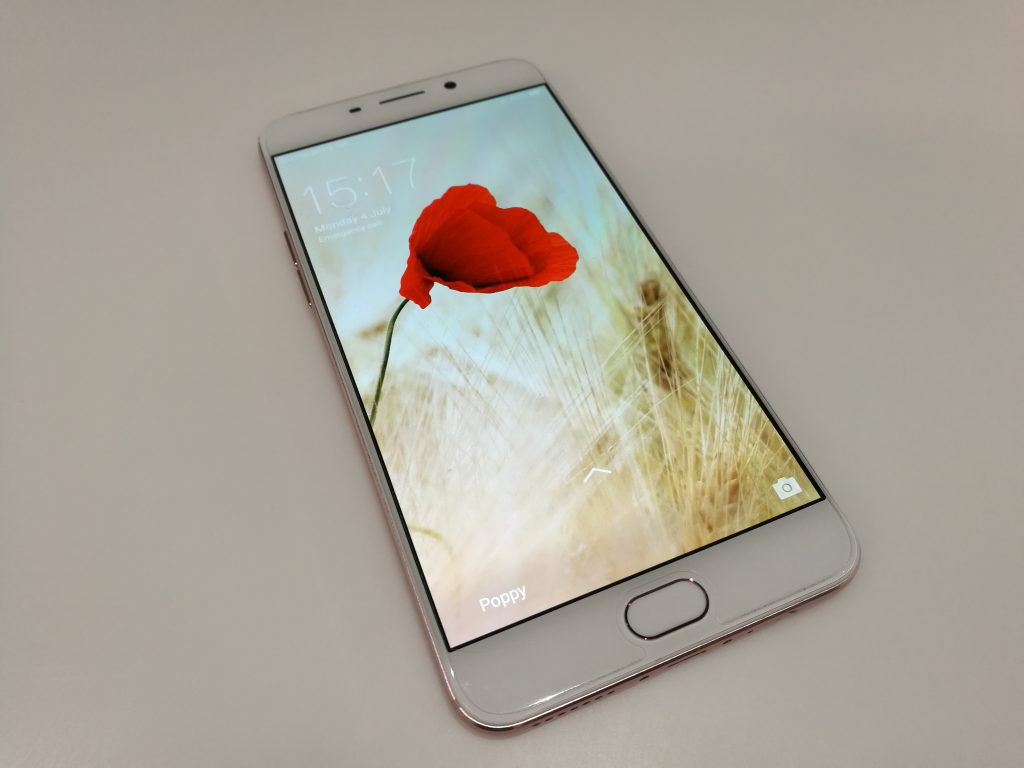
I find the layout that Oppo has gone for with the multi-tasking key on the left and the back button on the right to be ass around backwards, which could be fixed if it were software, but hey, it’s their phone – and that’s one of the reasons I prefer soft keys. The other is that the keys themselves don’t really show up on the white front of the phone, making that odd layout harder to use.
Oppo R9 Software
Oppo has with the R9 launched with Android 5.1 installed. Oppo has skinned their standard Android OS with their custom Color OS skin which is now up to version 3.0. While using the Oppo R9 I received several updates to the OS which were designed to improve the performance of the phone. It worked, but there’s no Android OS updates that appeared for the Oppo R9 and Oppo hasn’t been exactly awesome with their Android updates.
What Oppo has been great with is their Oppo Project Spectrum, a stock Android experience which includes custom Oppo software for the camera and other binaries required to make the phone run. Oppo hasn’t announced a Project Spectrum build for the Oppo R9 as yet, but Oppo Australia is very much a fan of the Project Spectrum so we’re hoping to see something released down the track.
Skin
Color OS is to say the least interesting. There’s a very heavy skin in place with Color OS, the app drawer is non-existent for a start, the notification panel, quick settings and even settings all get customised by Oppo – and not always for the better.
The notifications are different, instead of simply tapping a notification you slide right, it’s a new usage paradigm which makes one-handed usage a bit awkward. The Quick Settings menu is accessed by sliding down the notification panel and then swiping left, again, different and not in my opinion a move for the better.
The settings menu is also Oppo’s custom view and layout. Many OEMs change the look of the Settings menu, it’s when the layout is changed that it gets annoying. Many of the settings are hidden away in odd places you’re not quite used to, so there’s a bit to learn when searching for a setting you know is there.
The lack of app drawer is very much an annoyance, but this is fixed by using a custom launcher, unfortunately the rest of the issues are still present and you’ll just have to get used to them.
There’s annoyances sure, but there are however some interesting and beneficial settings included in Color OS. There’s a slew of notification and status bar mods you can enable like battery percentage, network speed, carrier logo and you can also have the amount of data you’ve used every day in the notification panel.
Oppo also includes gestures in Color OS you can double tap to wake, or you can draw an ‘O’ to launch the camera or a ‘V’ to quickly access the flashlight. There’s also gestures you can use while the screen is on to capture screenshots, or use Smart Call gestures to call people, auto-answer, mute or switch to speaker phone.
The Lockscreen Magazine is an interesting feature on Color OS, it’s custom lockscreen that displays pictures from a range of subjects. There’s cars, sports and movie stars, landscapes and with Oppo’s focus on fashion, models. There does seem to be a fair number of updates for the Lockscreen magazine which keeps it fresh
There is some what appears to be aggressive power management happening in the background of ColorOS, apps running one second disappear without any trace of having been running a second ago. Most annoyingly this happens with audio applications, pause your music or podcast, head back to press play and the app is not in the list of recent apps, nor is the widget in the notification pane or on the lockscreen. Weird and annoying and even with the app whitelisted, it just kept happening.
One last note on Color OS is the lack of notifications on Telegram. It’s a common theme that we’ve found on both Huawei and Oppo handsets, we’re not sure what’s going on and not something that will affect a heap of people, but something to be aware of if you use it.
The look of the icons on the R9 is very different to Android’s stock look. They’re the usual ‘squircles’ that other manufacturers have adopted. One neat feature of the Oppo icons for the Calendar and Clock are they update as the date/time changes.
Oppo’s ‘One-handed’ mode is also an option for anyone with smaller hands who find the 5.5″ screen too large even in the compact body. The software lets you reach more of the screen without really stretching your hand. It’s available for left or right handed users who can activate it by a diagonal swipe from the bottom left or right hand corner of the screen. Oppo has been including this feature in Color OS since version 2.0, so it’s not new, just a handy feature to know about if you’re not aware of it.
One feature I hadn’t seen previously is ‘Eye protection mode’ it’s a more modern thing based on scientific research that shows that blue light in the visible spectrum can keep you awake. Basically it turns your screen a more brown/orange colour, with varying degrees of intensity. Accessible in the Display settings to turn it on initially there’s a quick setting to turn it off and on as well.
Bundled Apps
Oppo has included a few bundled apps on the R9 but nothing overly onerous. There’s the usual calculator, email client and custom contact and phone dialler apps, video and music players and file manager, but you do have one app ‘Security Centre’ which will quite frankly drive you up the wall. The app is a centre for monitoring for viruses, space issues and also adds in a few privacy permissions as well.
The Security Centre gets a little annoying by constantly adding notifications about ‘potential security risks’ which can be as low-end as simply notifying you of potential space you can claim back by deleting cached files – not a huge issue on a phone with 64GB of on-board storage.
TouchPal Keyboard
For years we’ve espoused the virtues of manufacturers just using keyboard available commercially and after a fashion they seem, for the most part, to have listened. Oppo has opted for the TouchPal keyboard which offers load of features, with a decent word prediction algorithm and support for multiple languages. Touchpal can even learn from messages and from Twitter to really personalise your experience.
One let down is the lack of TouchPal premium support – normally $4.99 per year, but I`m sure Oppo and TouchPal could work something out. TouchPal premium includes multi-clipboard, cloud saves of your dictionaries and patterns, and offers you the chance to use cloud predictions.
Let downs about lack of Premium version aside, Touchpal is pretty darn good choice for a keyboard. It’s also going to be kept up to date which is a bonus for a keyboard on a manufacturer skin.
Battery life and Performance
Battery
The hero for me on all Oppo phones I’ve reviewed to date is the power, both charging and in terms of lastability. The Oppo R9 may only come with a 2850mAh (Non-removable) battery, but it seems to last forever.
The other big bonus is there almost magical VOOC charging, which tops off a battery to almost full in what seems to be no time. Disappointingly, the R9 doesn’t come with the recently announced Super VOOC Flash Charging which could almost fully charge this battery in 15 minutes, but the existing VOOC charging in the R9 is impressive nevertheless.
The average day for me is a fairly full one with a couple of hours of Bluetooth audio streaming from Pocket Casts, plenty of social media web browsing, chatting on Telegram, Hangouts and WhatsApp and of course capturing photos, and video playback – occasionally I turn on the Wi-Fi hotspot or turn to Google Maps for directions somewhere.
It’s a fairly intensive day by usual standards, unfortunately Oppo doesn’t really include graphical breakdowns of screen on time, just lists of percentage used by screen, and which apps used the most battery life.
A Battery saving function kicks in at 20% if you turn that option on in Settings, with the phone reducing screen brightness, shortening the automatic screen lock time and switching off mobile data, Wi-Fi, GPS, Bluetooth and of course your mobile hotspot if it’s turned on.
Performance
Let’s just say that there’s very little to complain about with the Oppo R9. The Mediatek processor is up to the challenge for what I run, which as you can see above is a pretty full slate – add to that some games if I`m bored and the processor and RAM on the phone get a full work out.
There’s the odd bit of jankiness as the RAM management unloads an app from memory, but it’s pretty rare with 4GB of RAM fairly well up to the task of running a high-end smartphone. As I’ve pointed at above, I would love to see the Oppo R9 on Project Spectrum with less Oppo skin to deal with while operating. For the most part though you’ll be pretty happy with the performance on the Oppo R9, especially with a phone that costs $599.
The battery life I saw in day-to-day use, as well as the performance is reflected in the PC Mark Battery life tests we run on the phones. The Oppo R9 gave a very high 9h28m battery life in the test, with a not so high-end score of 3,929 on the Work Performance test.
| Device | PC Mark Score | Battery Life |
|---|---|---|
| Oppo R9 | 3,929 | 9h28m |
| LG G5 | 5,798 | 6h32m |
| Samsung Galaxy S7 (SD 820) | 5,860 | 8h25m |
| Samsung Galaxy S7 (Exynos) | 4,793 | 8h08m |
| Samsung Galaxy S7 Edge (Exynos) | 4,808 | 9h06m |
| Huawei Nexus 6P | 4,380 | 6h50m |
Oppo R9 Conclusion
Oppo has released a number of phones in Australia with great specs and mid-range pricing, the Oppo R9 fits right into this category. There’s some rough edges on the camera, and the software is a little too stylised and customised for most Android enthusiasts to really get behind, but it’s a good phone.
I have some reservations around the design, it’s a little too slippery to hold with the aluminium body and curved sides but as Oppo iterates on their Aluminium unibody designs there’s a lot of room for them to work here. The other major drawback for me is the lack of NFC, which is a massive problem with a number of banks adding native support and Android Pay launching very soon.
Performance wise though, the phone runs smoothly, has great battery life and for the most part operates fairly smoothly. The camera is pretty decent, especially the front-facing camera so you’re going to find a lot more selfies in your albums down the track.
Availability of the phone is pretty good for Oppo, with this their first flagship available at launch through JB Hi-Fi, and with a $599 price tag you’ll be pretty darn happy with your purchase.















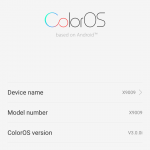
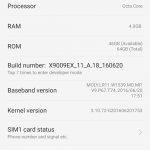
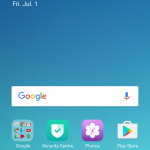



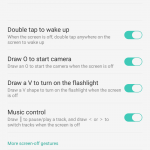
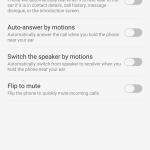







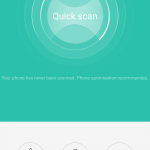

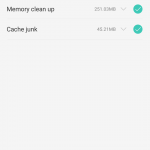


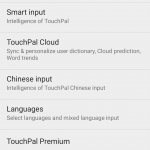

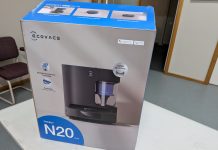

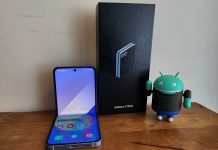
Agree with everything that was written, but… The problems with the opportunity r9 come from day to day use:
1. Quiet mode doesn’t work properly
2. SMS notifications are intermittent
3. Home screen notifications are hit and miss
4. Background notifications apps (Gmail, Garmin smart watch app, pushbullet, true caller) all seem to be “interrupted” or killed by colorOS making these features useless.
My female friend loves the gold color. Had to tell her how to appreciate it’s technical details, with highly zooming selfies, timer camera photos for shake free photos, etc.
You can now buy oppo phones for a huge discount at AndroidSmartphoneDeals;com
Wow, that Beautify 4.0 feature makes you look 10 years younger!
Media = Slow Updates = Disadvantage!
I’ve been hearing a lot about OPPO recently, this R9 certainly looks the goods
I’d lean to the R9 Plus, but with One Plus 3 being better value for money for me, I’d probably get 1+3 instead
Thanks for the review. Did you chop all your hair off? 😉